Review and photos by Bokisaurus
Part 2 of 4 – Large Play Visions Prehistoric mammals
This will be a series of four reviews. I decided that each of the figures in the set warrants their own review instead of combined into one. I will also cover the mini version that was from a separate set of 8 figures.
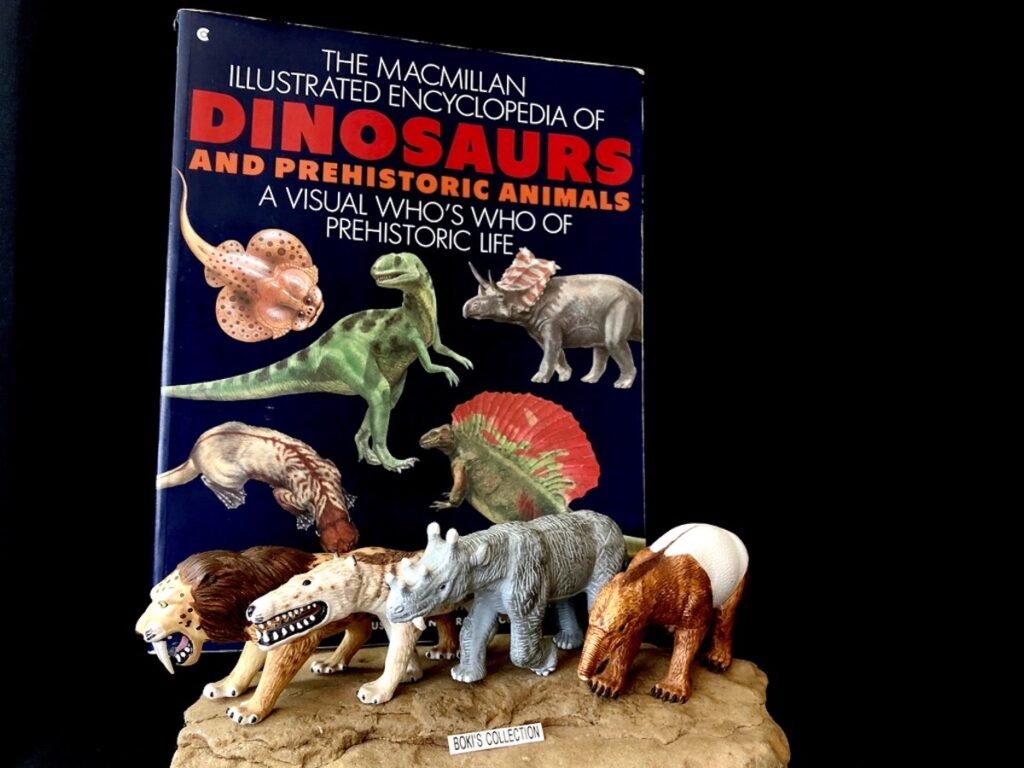
The thick eucalyptus woodland forest that just a moment ago was full of sounds suddenly grew eerily quiet. An unseen predatore is on the prowl. Suddenly, high up in the canopy an alarm call from one of the many species of birds that inhabit the forest echo through, shattering the silence.As if suddenly woken up from a trance, various panicked animal sounds penetrate the forest. Many species have their own alarm call that other non-related species recognize, and when heard, they all heed this call and seek out shelter and hide.

Far below the forest floor, the rustling of bushes signals the approach of an animal, something big. For a split second, a strange animal comes into view hurriedly leading its young towards a ravine where they quickly vanished.This strange animal is one of the largest mammals that roamed prehistoric Australia, this is Palorchestes.
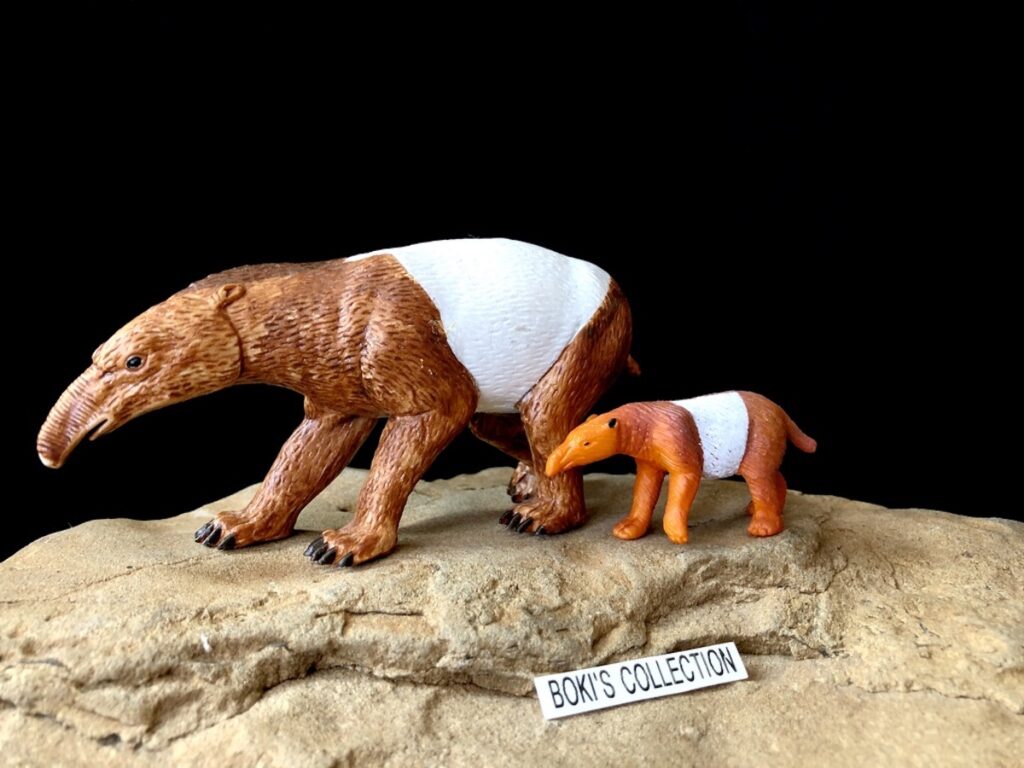
As I mentioned in the Smilodon review, I first became aware of this line way back in the late 1990’s when I visited a small art store. Although I ended up buying the figure of the two more familiar species, Smilodon and Hyaenodon (which turned out to be Andrewsarchus!), this is the figure that really caught my eyes. It was so odd looking and I have never heard of it before, that I thought maybe it wasn’t a real animal ( I did not know much about prehistoric mammals back then and before WWPB). I had planned on going back to purchase the other two figure, but I never made it back, at least not until the following year in which the figures were long gone from the shelf, replaced by cheaper dinosaur figures.It was only years later that I would realized what a mistake it was and regret not getting back then when I had the chance.
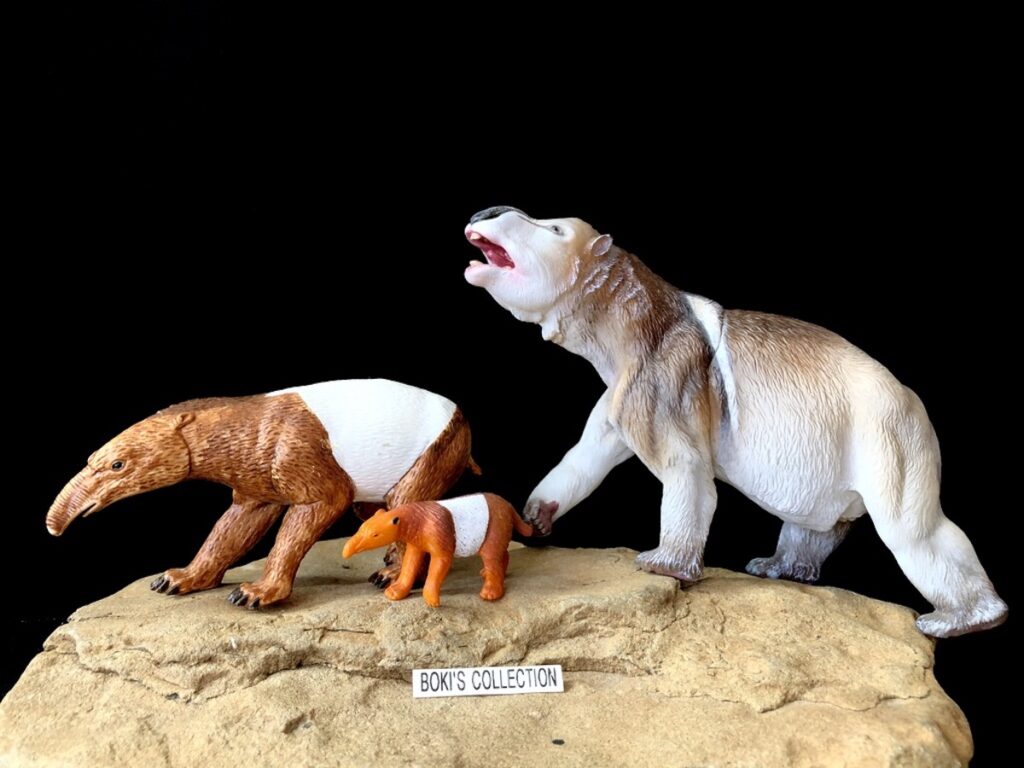
Palorchestes azalae ( Ancient leaper) is a large and strange Diprotodon that also goes by the popular name ” marsupial tapir”. This common name is misleading since this animal is not related to tapirs, not even close. If you notice, it is also odd that it was given the name that means “Ancient leaper”, but this was back then when it was thought that, based on its teeth, that it was a form of giant kangaroo.
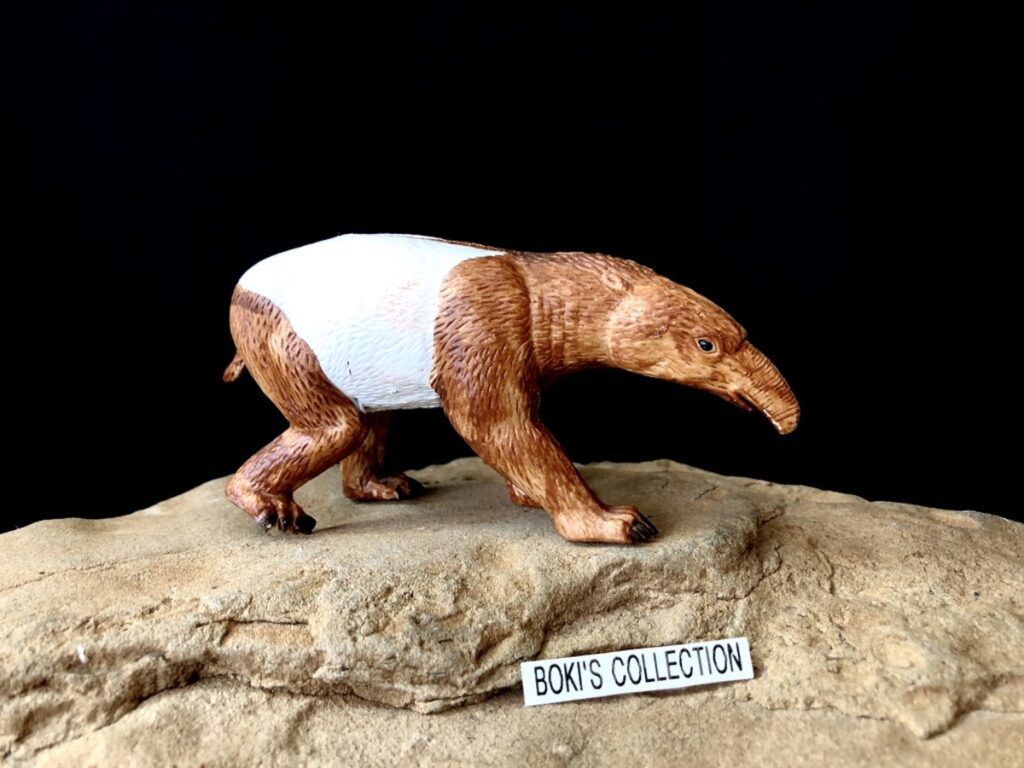
Like the majority of Australian mammals, Palorchestes is a marsupial. It roamed the Australian continent for thousands of years, from the Miocene through the Pleistocene epoch. Like in many parts of the world during this time periods, where animals grew to large size than is seen today, Australia’s fauna also grew huge in size, and Palorchestes was no exception and would be one of the last truly big animals the land down under would see.Size estimates for Palorchestes being around 8 feet in length, comparable to a modern horse, and can reach weight of up to 2,200 pounds!
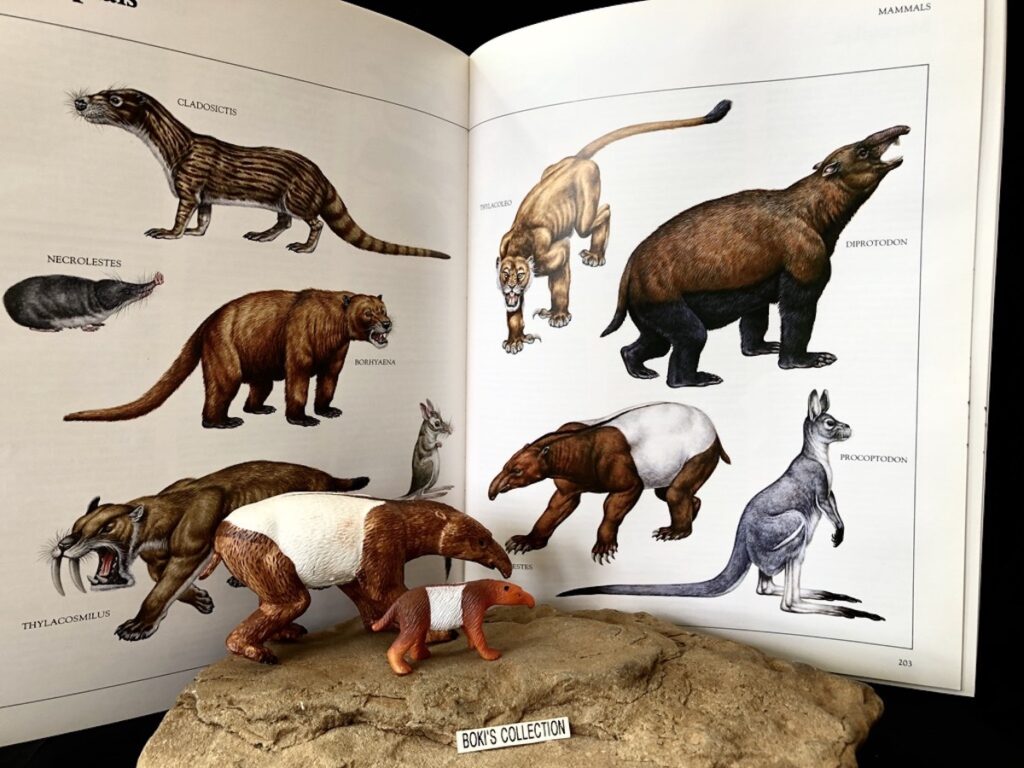
Looking at the illustration in the book, one can see that Play Visions has faithfully replicated it down to the two-toned coloration. Palorchestes was large and most likely heavy built based on its anatomy. It was an herbivore with large and powerful forelimbs which have large and robust claws. It is believed that they ate leaves and used these large claws to pull down branches that are beyond reach.
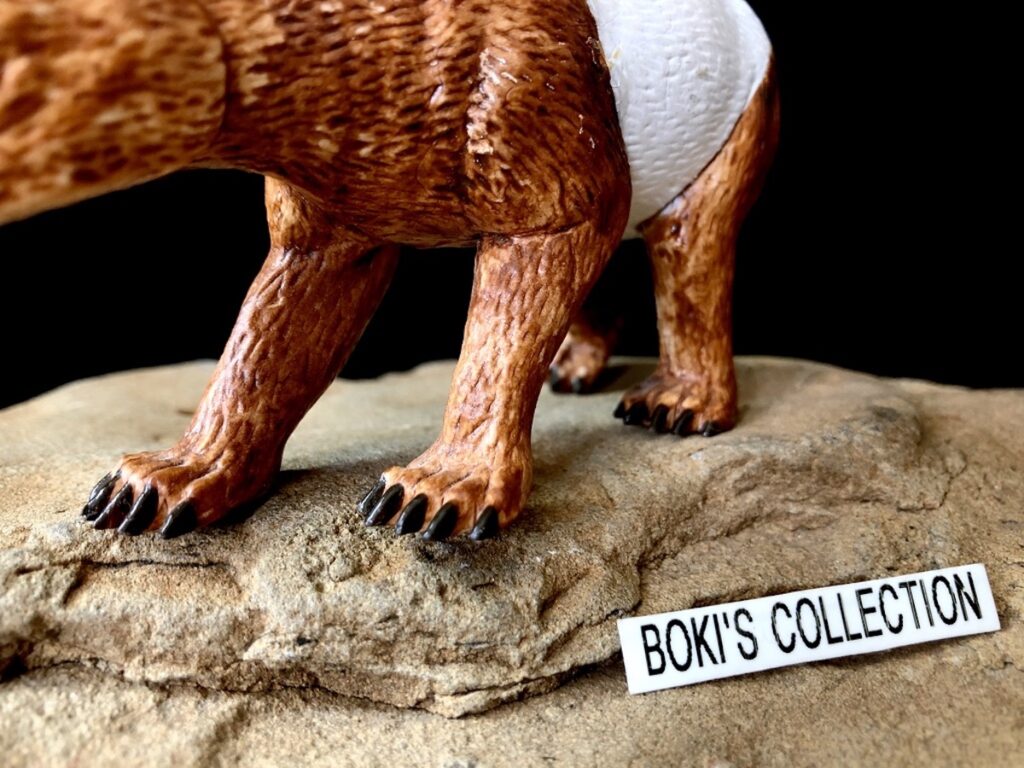
The figure does have strong limbs and the fore claws that are appropriately for a large quadrupedal herbivore. The body is built solidly with lots of heft to it. The legs as can be seen are powerful. The figure is caught in mid-stride, casually walking with one front leg in front while one of the back leg is slightly pulled back and raised as in the act of stepping.The details on the body such as the fur are there but are slightly exaggerated and looks more like little dents.
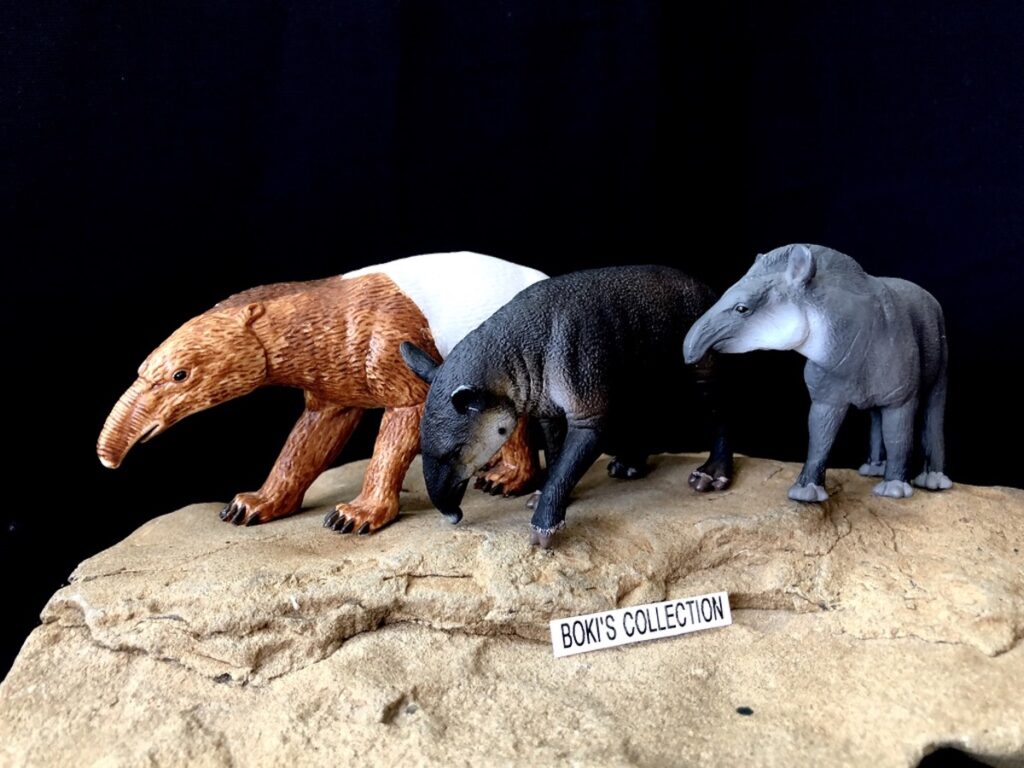
The common name ” Marsupial tapir” is due to how the skull is formed. The structure suggest that the animal may have supported a short proboscis, a trunk, in life, thus the tapir reference.Of course it’s not related to tapirs, any possible resemblance would have been a result of convergent evolution.On the figure, this trunk is very much the star. The long trunk have ridges on it like something you would see on an elephant.
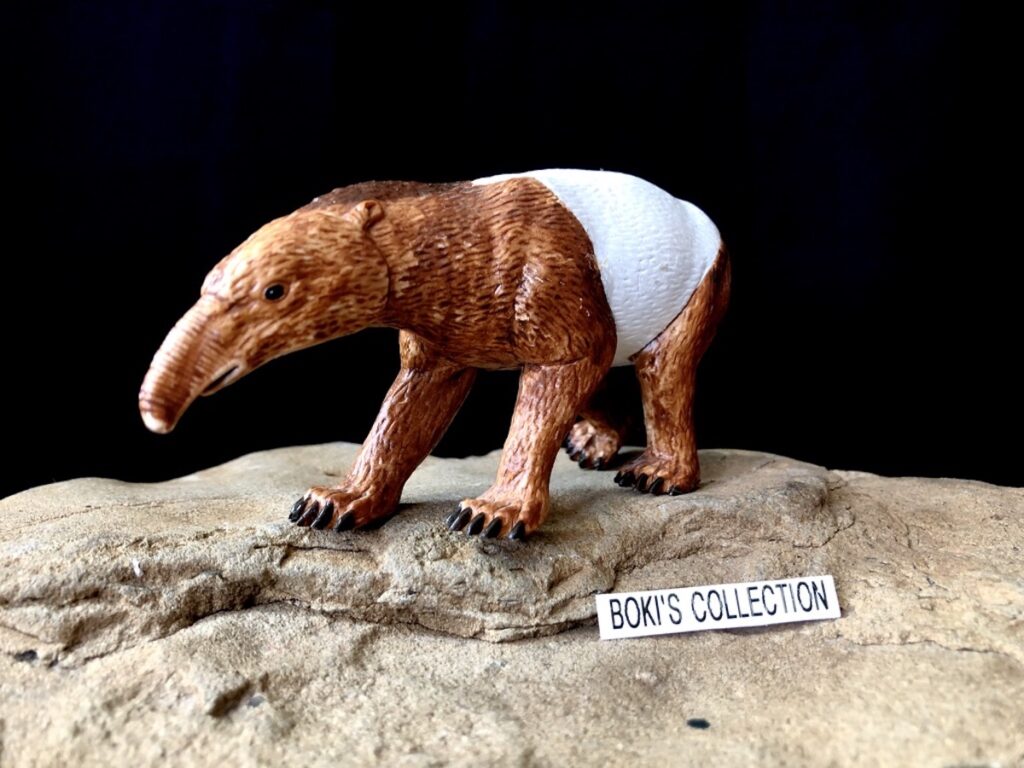
The nostrils are located at the tip and you can see the lower lip just under the trunk. There is also a slight raise on the front of the face, a forehead, that slowly rise up towards the head. The eyes are large and situated on the side just below the forehead. The eyes are painted black and if you look closely, you can see some simple details around it that suggest eyelids.The head itself look slightly large in proportion to the body. At the back of the skull you see the tiny ears which are flattened, an indication of perhaps being on alert despite its calm pose.

There are large predators that stalked the landscape. Mature animals were probably rarely attacked unless they are old or sick. Juveniles on the other hand are an easier prey. Predator such as the impressive Thylacoleo or Marsupial lion is one such predator that could very well attack Palorchestes.
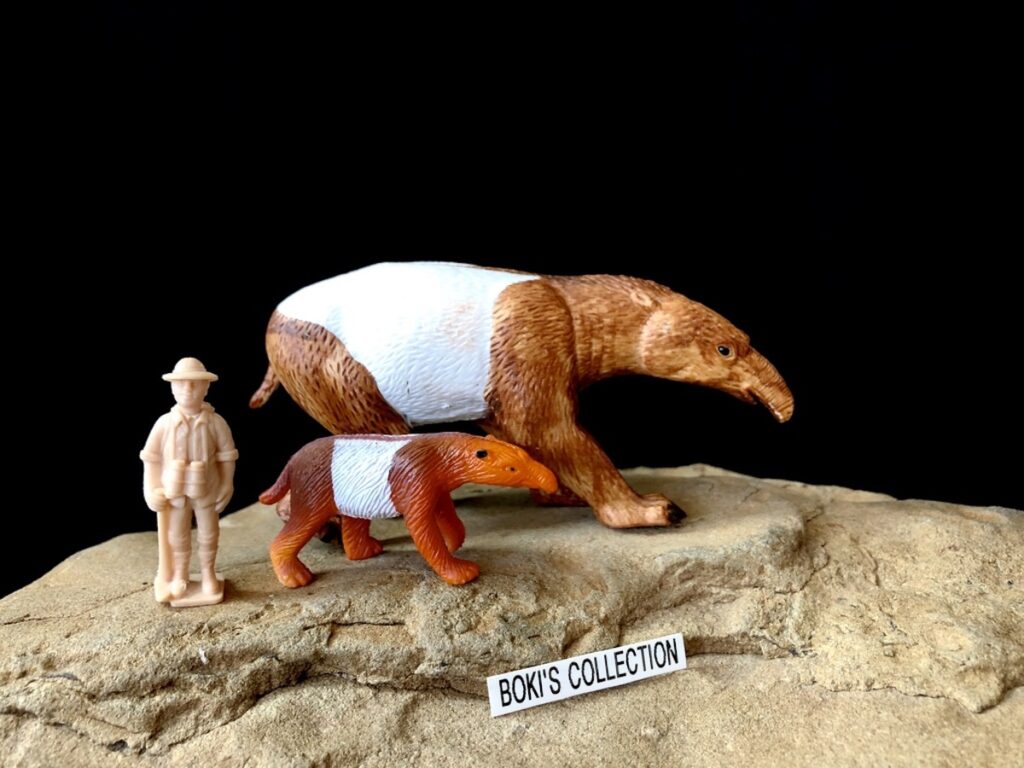
The color is straight out of the book. The two-tones comprise of a white color on the center of the body, then is surrounded by an orange-brown. This pattern is similar to that of the black and white color pattern on a panda bear.The simple design is effective and makes the figure really stand out. It is also something that is convincing, something that is very possible for an animal of its size.
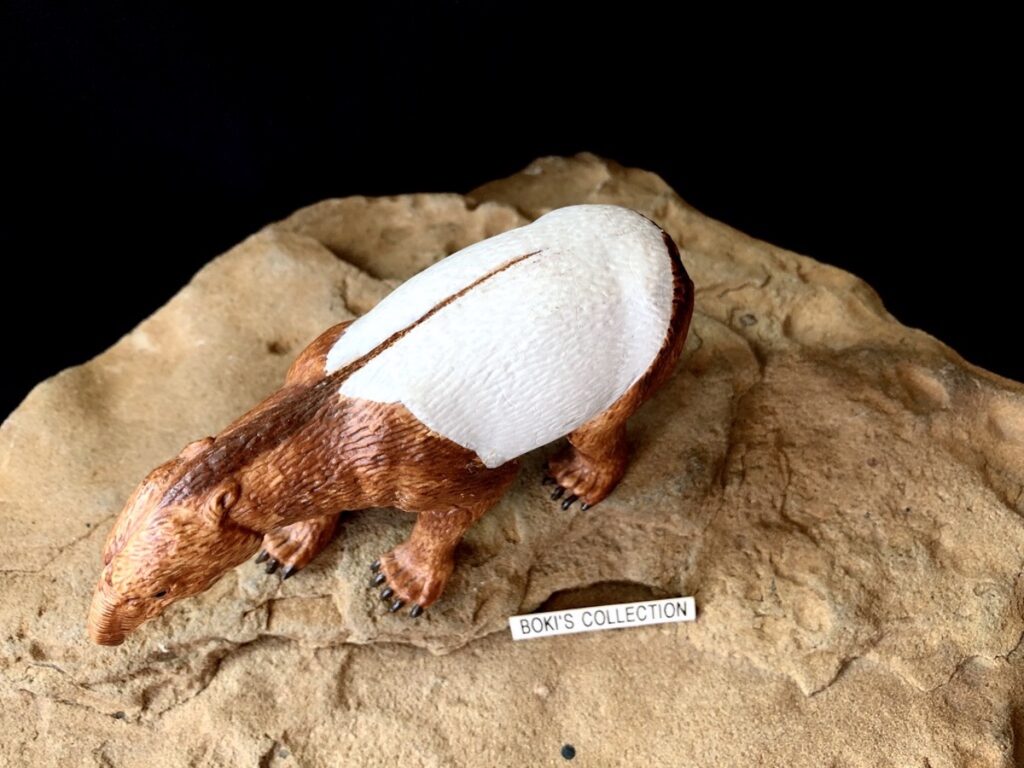
Like the Smilodon figure, this one also has a small version in the mini set, but unlike it, this mini version is very much like the large one. The only big difference between the large and the small is that on the mini figure the brown is replaced by an orange color. Other than the colors the slight differences such as the position of the legs, are subtle and not really that much big of a differences. Of course with the smaller size, delicate details such as the fur are more simplified and are not as easily visible.
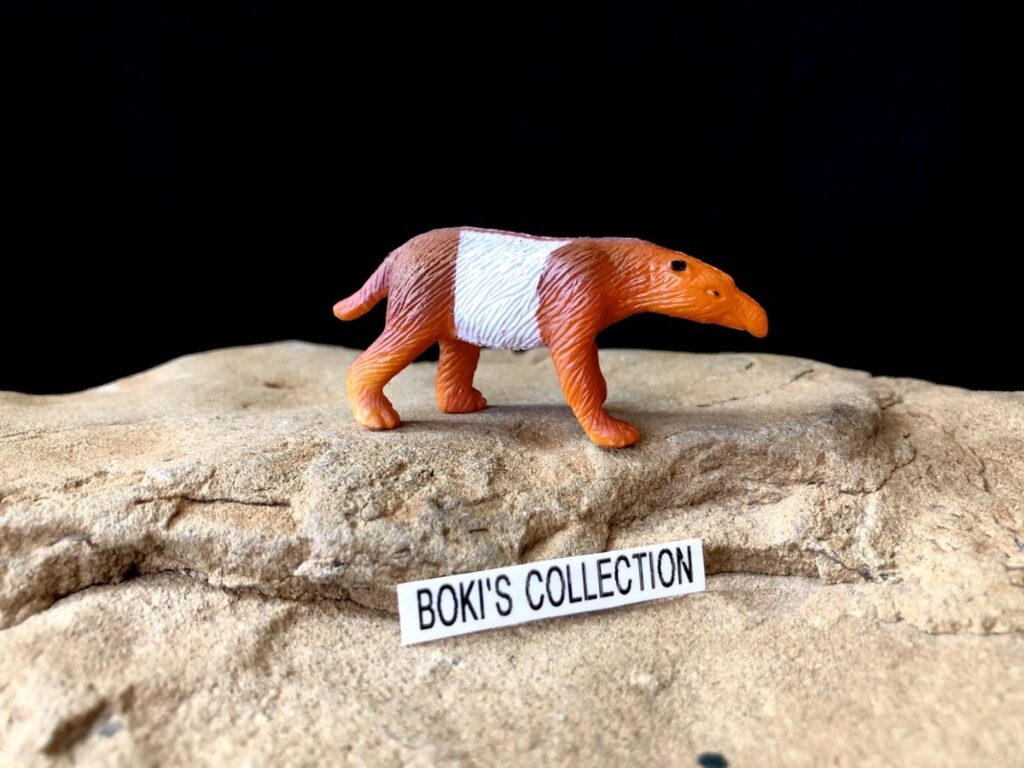
The small figure makes a nice joey that has gotten big enough to stay out of the pouch and the two makes a wonderful pair.This figure is really unique and, as far as I know, these two are the only toy versions of this species available. I don’t think anyone else made one. It’s interesting that Play visions went for this obscure animal.
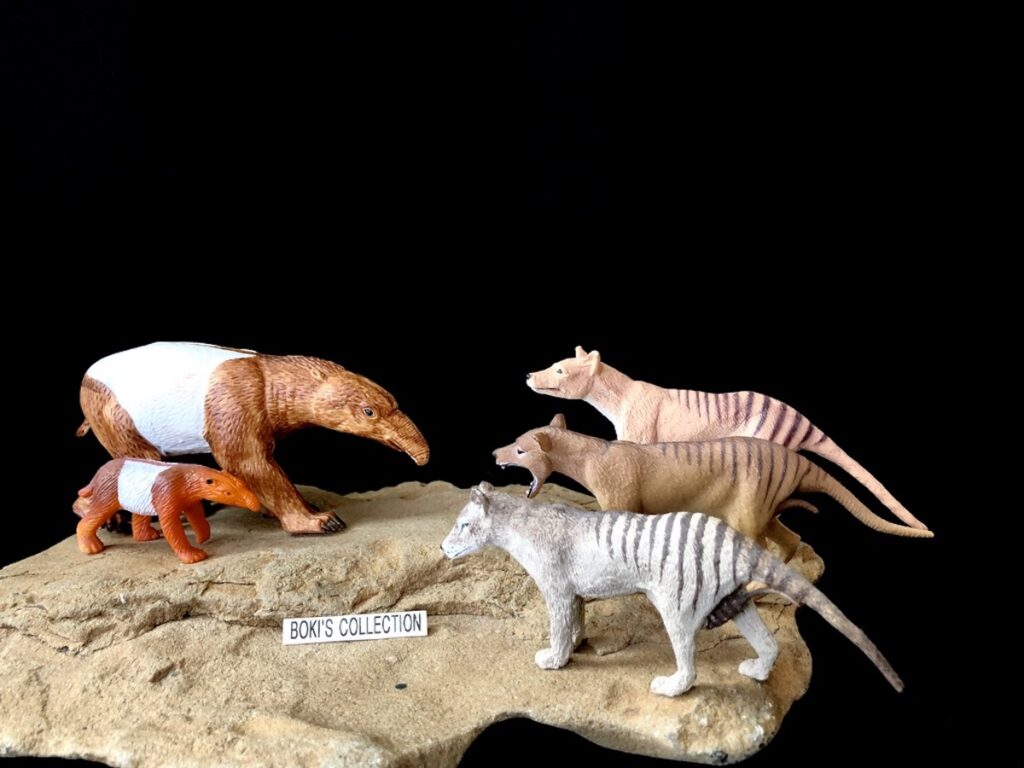
It would be more than a decade since first encountering this figure that I will acquire one. Little did I know that I will be re-introduced to the line again when I joined the DTF.It was during that first year that I realized just how rare these figures had become. With my new found knowledge and interest in prehistoric mammal, I embarked on a search for these figures, which would take years before finally, with luck and a little help, I would eventually complete the collection. I will share the story of how I came to acquire the entire set when I conclude the series.
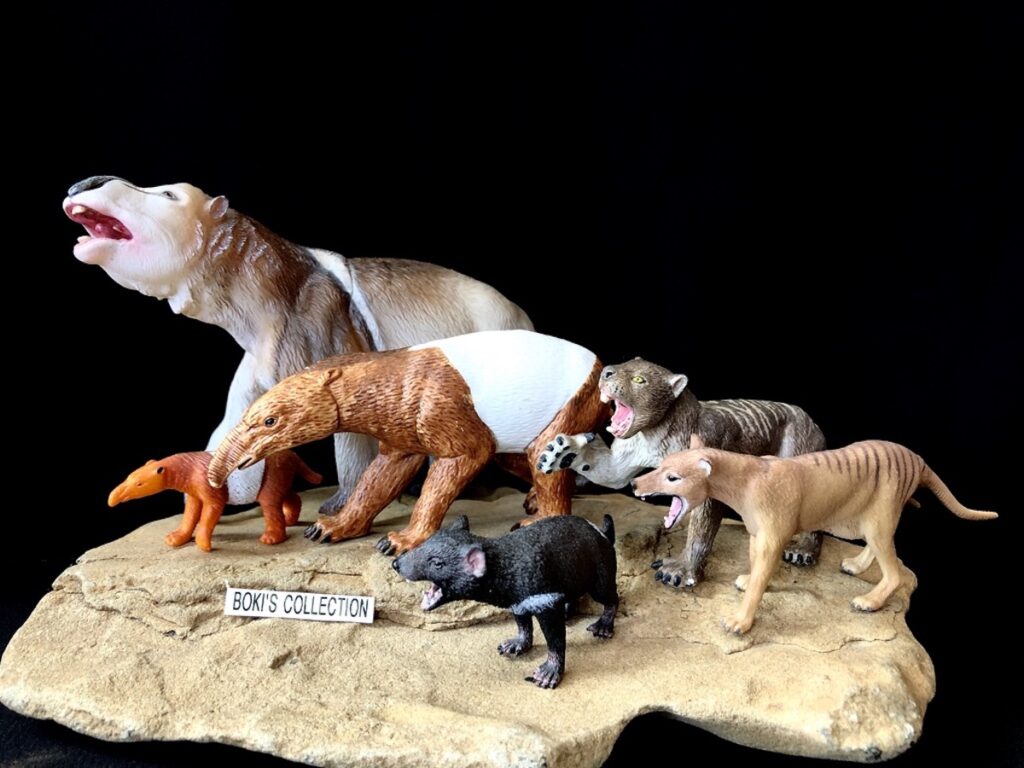
The unique mega-fauna of prehistoric Australia are some of the most fascinating, yet most are still so obscure. In the toy figure market, they are rare, so this figure is definitely one of the few ones out there. It is also, until very recently, was one of the largest. There were the Yowies, but those are small figures.
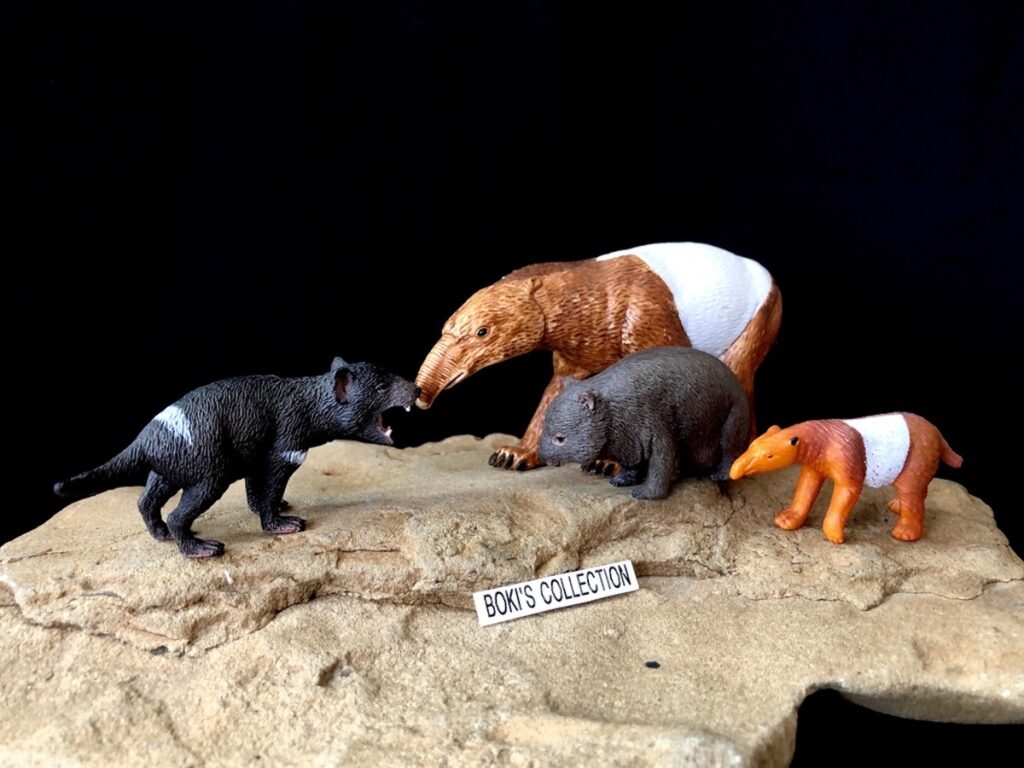
But companies are starting to give these unique faunas some attention, brand such as Southland Replica, Geoworld have released some Australian mega fauna within the last few years.Hopefully the trend continues and we start to see more in future releases from companies such as CollectA and Safari.
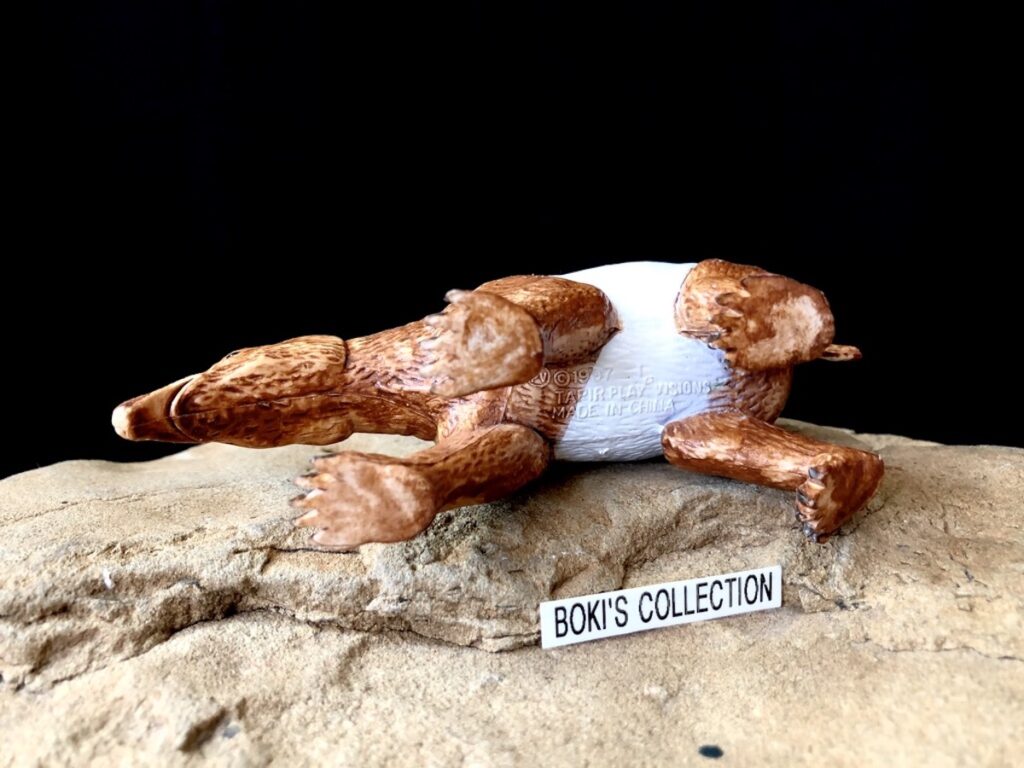
The Palorchestes figure is perhaps the rarest and hardest to find out of the four large figures, and when one does become available, can command high price ($40-60 dollars the last time I saw one on ebay a couple of years ago).But if you luck out and happen to find one at a reasonable price, it is definitely worth getting especially if you collect prehistoric mammals.
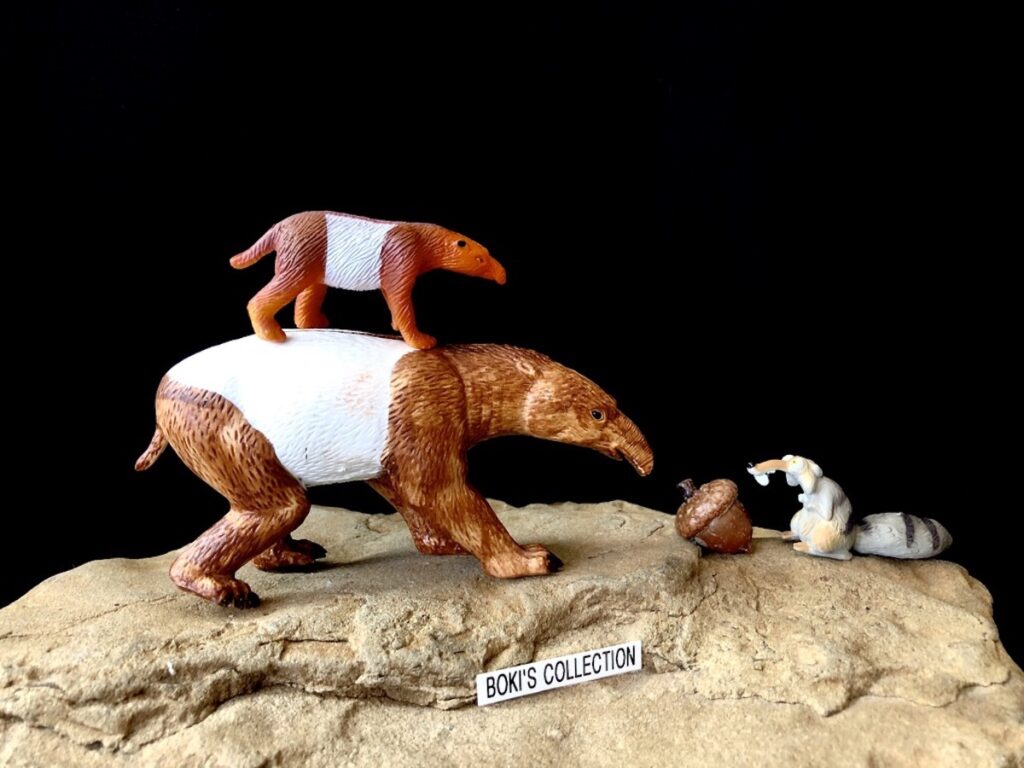
Well, hope you all enjoyed the review of this fascinating figure. Thanks for reading, and until the next installment, stay safe and healthy! Cheers!
Disclaimer: links to Ebay and Amazon on the DinoToyBlog are affiliate links, so we make a small commission if you use them. Thanks for supporting us!




This is the most interesting one of the set. What’s the best way to search it on eBay? What’s a good search term?
It is one of the best made primitive marsupial mammals on the toy market, despite the time this figure is perennial in its beauty.
It’s a great figure despite its age. I hope that one of the major brand will make a figure of this in the near future.
Love the steady stream of prehistoric mammals lately 🙂 This one in particular is lovely! Would love to hunt down the large version!